Coffee Break – Show 5
Our attendance at the Open Networking Symposium promotes a discussion of events there.phpipam version 1.0 released
Dear all, I am happy to announce new version of phpipam IP address management – version 1.0. 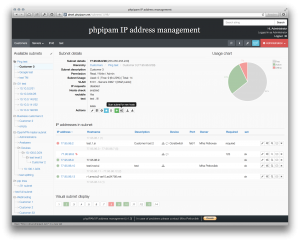
New features, like changelog, favourite subnets, upgraded UI with bootstrap3 and other were introduced, and also lots of improvements and bug fixes are included. Most important are:
- IP address changelog, subnet and section changelogs with full changelog under tools;
- Favourite subnets for quick access;
- Bootstrap 3 with UI enhancements;
- Widgets can be reordered (dragged) directly on dashboard;
- Mail settings can now be set on gui (localhost / smtp);
If you find phpIPAM useful for your company donations would be highly appreciated ![]()
You can demo it here: http://demo.phpipam.net/
You can download it on sourceforge site: phpipam-1.0.
Special thanks to all the people submitting bug reports, translators and feature testers!
Screenshots:
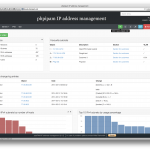
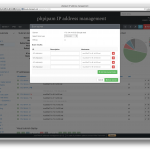
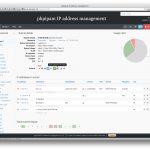
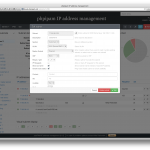
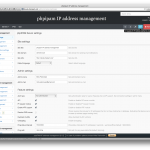
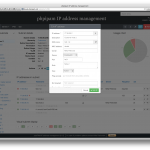
Full changelog for this release is:
New features:
----------------------------
+ IP address page with IP address details and IP history (Changelog);
+ IP address changelog, subnet and section changelogs with full changelog under tools;
+ Favourite subnets for quick access;
+ Adding subnets from free space with automatic mask provided;
+ Automatic database validity check after upgrading and automatic field/table fix under administration;
+ Automatic weekly check for new phpipam Continue reading
IPv4 and IPv6 dual-stack PPPoE
The lab covers a scenario of adding basic IPv6 access to an existing PPPoE (PPP for IPv4). PPPoE is established between CPE (Client Premise Equipment) the PPPoE client and the PPPoE server also known as BNG (Broadband Network Gateway). PPPoE server plays the role of the authenticator (local AAA) as well as the authentication and […]Read This if You’re Going to Cisco Live in May!
Do not tell anyone I told you, but I heard a rumor today. It looks like the attendees will be in for quite a treat for the 25th Anniversary of the Customer Appreciate Event. It seems that we’re all going to be shipped off to AT&T Park for the show! It’s the home of the San Francisco Giants and a beautiful stadium. And guess who’s going to be there? Yes, me. And my wife. And about 984572 of my friends. But so will Lenny Kravitz and Imagine Dragons!
AT&T Park I can’t imagine a better place to spend the evening with your friends than here. McCovey Cove. The Giants Wall of Fame. The 1927 Glove. The Willie Mays statue. Ballpark food. And, for the network angle, it boasts one of the largest public hotspots in the world.
Lenny Kravitz We all know he plays Cinna in the Hunger Games, but did you know he actually plays music on the side? I had no idea! Ok…maybe I did. And maybe I’m a fan. And maybe I’ve never read Hunger Games. (All are true, by the way.)
Lenny’s a Grammy winner. Four of them, to Continue reading
How to Fix the SIOCSIFFLAGS Error in Kali Linux
I recently rebuilt my laptop and reloaded the applications I use for pentesting including Virtualbox and Kali Linux. If you need help setting up Kali Linux in Virtualbox here is a great link that walks through the setup process.
Once I had Kali up and running in my virtual environment I plugged in my ALFA wireless adapter and made sure the USB device was running in the virtual environment.
I ran iwconfig to verify the wireless interface.
So far so good and I ran ifconfig to verify the interface was up, but the only interface returned was the loopback.
After discovering the wireless interface was not up and I ran ifconfig wlan0 up to bring it up and got the SIOCSIFFLAGS error.
I wrote about this error a while back when I was running Backtrack 5 and I first started using the Fern WiFi Cracker. I decided to expand on that post plus I was asked about creating a script to run all the commands at one time instead of typing them individually. The script should be run every time Kali is booted, but after your adapter is plugged in and recognized.
First open a text editor and type in the Continue reading
The DRY Principle, and Why Network Engineers Should Care
The networking industry has long speculated that coding skillsets are something that will likely become key in the future. I’m sure this will vary from job to job, but I can tell you that - at least for me - it’s already happened. I’m not even just talking about knowing syntax like Python, Java, Ruby, etc. I’ve maintained these skillsets sufficiently throughout my network-specific studies that recalling these skills isn’t that hard (admittedly I’m a youngin so it hasn’t been that long).The DRY Principle, and Why Network Engineers Should Care
The networking industry has long speculated that coding skillsets are something that will likely become key in the future. I’m sure this will vary from job to job, but I can tell you that - at least for me - it’s already happened. I’m not even just talking about knowing syntax like Python, Java, Ruby, etc. I’ve maintained these skillsets sufficiently throughout my network-specific studies that recalling these skills isn’t that hard (admittedly I’m a youngin so it hasn’t been that long).What’s better for your big data application, SQL or NoSQL?
One of the critical decisions facing companies embarking on big data projects is which database to use, and often that decision swings between SQL and NoSQL. SQL has the impressive track record, the large installed base, but NoSQL is making impressive gains and has many proponents. We put the question to experts in both camps.

CTO, of VoltDB says SQL has already earned its stripes in large organizations and big data is just one more job that this stalwart can shoulder. View debate
To read this article in full or to leave a comment, please click here
Secret CEF Attributes, Part 5
So far we’ve explored some very cool features of CEF and the attributes we can push into the FIB to identify certain kinds of traffic. We can color the prefixes in the RIB and FIB with a particular IP-Precedence, QoS-group or traffic_index and we can then perform traffic monitoring, shaping and policing and packet marking […]
Author information
The post Secret CEF Attributes, Part 5 appeared first on Packet Pushers Podcast and was written by Dan Massameno.
Enterprise Networking Planet Article: SDN in the Enterprise
This item has no description. Follow link to view item.RCR Wireless Article: Stumbling Block – SDN Management Challenges
This item has no description. Follow link to view item.The Management Challenges of SDN
The Management Challenges of SDN
by Brian Boyko, Technology Commentator - March 11, 2014
Really, when we talk about SDN in the WAN, all we’re talking about is separating the control plane (which tells data where to go) from the data plane (which forwards traffic to the next node). We’ll still have physical routers and other infrastructure, but they’ll become “commodity forwarding devices” with the control plan intelligence residing in a server – the SDN controller. This enables us to create virtual network overlays and functions.
Where this can be a challenge is not so much in figuring out how to integrate it into your network but the lack of widely accepted standards for SDN. Certainly, the Open Networking Foundation is developing one, but it’s yet to see full adoption. And without standards for SDN, it will be difficult to build systems. Now the ONF and other consortia and standards bodies such as the IETF are making progress on this issue – and Packet Design will be part of the process by which progress is made – but until standards are fully established, SDN may be limited only to those companies willing to spend the massive amount of time Continue reading
Comware: Configuring QinQ
The QinQ feature (802.1q over 802.1q), also known as Stacked VLAN or VLAN over VLAN, supports the utilization of two 802.1q tags on the same frame Ethernet for VLAN over VLAN traffic – without altering the original TAG.
For the customer perspective it is like the Service Provider has extended the cable or fiber between 2 points. From the Service Provider perspective, it doesn’t matter if the customer is sending a frame ethernet with or without TAG 802.1q, because it will add one more TAG to the header and remove on edge device just the last insert tag.
In a nutshell, the inbound interface configured with QinQ, will add a 802.1q TAG to the frame, even in case if the VLANs were tagged, however on the outbound port, only the last TAG added is removed, keeping the TAG 802.q inserted by the client.
Configuring
With the example above, we shall configure both Switches A and B with one VLAN for each client and configure the customer-connected-interfaces, such as “qinq enable”. As a detail, notice that is important to disable the STP on each interface for the BPDU issues, so the BPDUs will not interfere Continue reading
MTU Considerations for VXLAN
When using overlays, its important to remember (in most cases) that an entire Ethernet frame is being encapsulated in something else (usually Ethernet + IP + UDP + Overlay Header). This means that the Maximum Transmission Unit for the underlay must be adjusted. There are a number of posts out there about correct MTU settings for VXLAN. Unfortunately, many of them are either wrong, or unclear as to the math behind these calculations.MTU Considerations for VXLAN
When using overlays, its important to remember (in most cases) that an entire Ethernet frame is being encapsulated in something else (usually Ethernet + IP + UDP + Overlay Header). This means that the Maximum Transmission Unit for the underlay must be adjusted. There are a number of posts out there about correct MTU settings for VXLAN. Unfortunately, many of them are either wrong, or unclear as to the math behind these calculations.NTP for Evil
There was a story that was distributed around the newswire services at the start of February this year, reporting that we had just encountered the “biggest DDOS attack ever” from a NTP-based attack. What’s going on? Why are these supposedly innocuous, and conventionally all but invisible services suddenly turning into venomous daemons? How has the DNS and NTP been turned against us in such a manner? And why have these attacks managed to overwhelm our conventional cyber defences?Protocol Basics – The Network Time Protocol
These days we have become used to a world that operates on a consistent time standard, and we have become used to our computers operating at sub-second accuracy. But how do they do so? In this article I will look at how a consistent time standard is spread across the Internet, and examine the operation of the Network Time Protocol (NTP).The Ideal Cloud Network: SDN Overlays, Underlays or Both?
Enterprises are still a complex mix of legacy and newer cloud applications, yet smart use of universal SDN-based cloud networks is the great equalizer in bringing enterprises and the new applications of the cloud together. Evolutionary migration strategies from a mainframe to a client-server architecture can also be applied to the next phase of cloud and virtual age networking. To appreciate how they apply, one must better understand the diverse definitions of SDN, and its true applicability in next generation networks. Let’s review some of the terminology often used and confused in our industry.
Overlay SDN: The most visibly promoted controller for SDN overlays today is VMware’s NSX (Microsoft System Center, Juniper Contrail and Nuage Networks may also fall into this category). Some networking features and functions are moved into overlays to control the data, flow or forwarding path. This includes:
1. Software overlays to shift management functions from the control plane of the network to servers
2. Specific use-cases such as server virtualization, L4-L7 load balancing, security, Openflow etc.
Functional controllers leverage existing physical networks and apply features and functions such as provisioning that can be used via abstraction, APIs, a CLI and limited scripting.
Underlay SDN: Controllers do Continue reading
Demo: Common Programmable Abstraction Layer
Edit 3/15/2014:
Github repo for CPAL
If there is a controller in the environment, you can still view data around particular physical and virtual switches in the environments by creating the right modules. Same can be said if there was a CMP/CMS deployed. While a CPAL can easily make changes to the network, it’s about taking small steps that can have a larger impact on how we use new APIs on network devices and controllers. And if we don’t strive for a common framework now, we will end Continue reading





